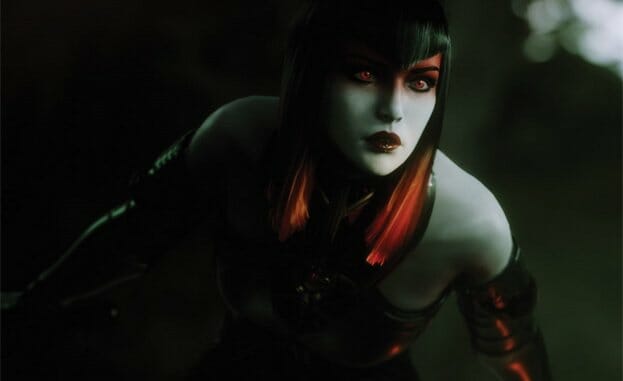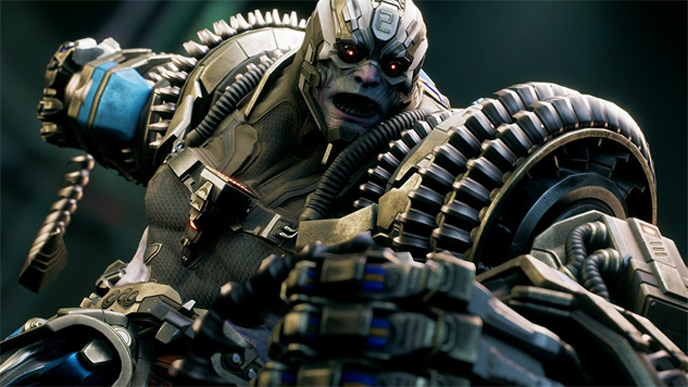
There were more than 25 great games this year, so our list of the best games of 2016 doesn’t include all of our favorites. This week our editors and writers will be looking back on their favorite games of 2016 that didn’t make that list. Next up: newcomer Nicole Carpenter.
This year was a good one for game releases, so much so that a few may have slipped under your radar. Paragon, released in early access back in March, is probably one of them. Emerging during a marketing release season stuff with hero-based betas, it quickly became confused in the weird cross section formed by the wake of Overwatch.
But Paragon is not Overwatch. Heck, it’s not even like Overwatch. For those who’ve played the game, that much is obvious, but for the uninitiated, it may not be clear. Paragon on a surface level may seem to have much in common with the hero shooters that reshaped the gaming landscape in the first half of 2016. But truth be told, it’s more of a multiplayer online battle arena game, like League of Legends or Dota 2. Its ability to straddle the genre fence may be why it got lost in the shuffle.
Much of the confusion may be due to the visual perspective of Paragon’s field of play. MOBAs traditionally feature top-down gameplay—League of Legends, Dota 2, Heroes of the Storm. However, prior to Paragon, developer Epic Games didn’t make those kinds of games, preferring third-person, over-the-shoulder action games like Gears of War. When approaching a MOBA, Epic played to its strengths: third-person action set in a dynamic, hyper realistic world. That perspective gave Epic a way to invite its core audience—a group that likely includes folks uninterested in MOBA games—to a new genre. This potential for crossover interest was absent with League of Legends or Dota 2.
Paragon looks like a shooter. Towering ledges allow snipers to perch high above other lanes, while tangled jungles obscure vision allowing stealth players to hide. Verticality and environment depth is a relatively new feature of MOBA games, but something Gears of War players will be familiar with. League of Legends and Dota 2 have just don’t have the sort of verticality that Paragon does; changes in terrain in other MOBA games are slight, if at all. Like League of Legends and Dota 2, however, Paragon has three lanes—an important element of MOBA games—but they’re arranged in a way that makes the maps interactive.
This extends to the game’s tone. Paragon looks different from other MOBAs. Its muted tones and hyper realistic setting is out of place in a genre rife with colorful, cartoon-like characters. It’s evident this plays a role in the mischaracterization of Paragon when considering another over-the-shoulder MOBA, Hi-Rez Studios’ Smite, a game that doesn’t evoke the same confusion. Its perspective, too, brings players closer to its action, but the art style is similar to League of Legends and Dota 2—a colorful, stylized world with vivid characters. Which is not to say that Paragon doesn’t have mythical and fantasy characters. It does, like The Fey, a forest fairy, or Riktor, a burly cyborg. But those characters have a sense of realism rooted in their design. The humans all look distinctly humanoid, devoid of the caricature-esque look traditional to MOBAs. Paragon is a game where people will bring up its graphics and realistic character design as being among its strongest features, and that’s new for MOBAs.
Despite that, Paragon is still undoubtedly a MOBA. Core objectives are identical: teams of ability-based champions creep across a three-laned map, shoving back hordes of enemy minions. It’s a slow, methodic push, with a focus on grinding for items and levels. Wiping out the enemy team is important, but it’s not the only goal; in a MOBA, players can never forget about the towers.
So should you play Paragon? That’s up to you. It’s free to play, so you’ve got nothing to lose. But here’s a question you shouldn’t ask: if I like Overwatch, will I like Paragon? The answer is too conditional. For those that like both, it’s probably more as a coincidence than any overlap in gameplay. There are shooter mechanics and the third-person over the shoulder perspective sets it apart from League of Legends and Dota 2, but Paragon is a MOBA. If you don’t like MOBA gameplay, you probably won’t like Paragon.
Paragon’s developers have been touting the game’s pursuit of realism since its inception. Designers at Epic felt that damage dealt in traditional MOBA games was more implied than explicitly shown. For some players—and for spectators—it made the games hard to follow. In Paragon however, if players get hit, they’ll feel it. “When you play Rampage in Paragon,” creative director Steve Superville says, “you rip a rock out of the ground and you throw it across the level.” He continued: “When it hits him, you know exactly what to expect. It’s going to hurt. It’s going to take [your opponent] out of the fight for a few seconds.”
For all its popularity, Paragon didn’t get a lot of attention this year, perhaps due to the confusion over its genre. But don’t let the comparisons to League of Legends turn you off. Paragon still sets itself apart from traditional MOBAs, and that’s a good thing. As the game continues into its open beta, Epic will keep reinventing it, adding new features to Paragon and carving out an identity of its own.
Nicole Carpenter is a freelance writer and reporter. She has a cat named Puppy. Follow her (and Puppy) on Twitter.


